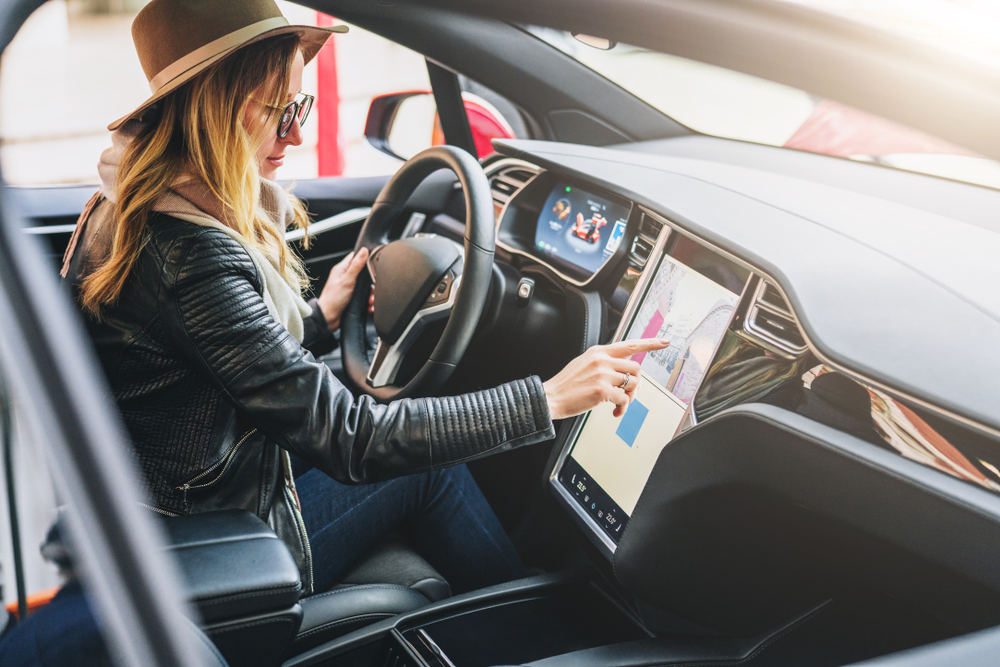The automotive industry in India plays a crucial role in the country’s economy, contributing significantly and expected to account for 12% of India’s GDP by 2026. While the current phase of discounting and slowdown may be temporary, the industry faces a range of evolving challenges and opportunities. With increasing pressure on revenue and margins, the global automotive sector is exploring new revenue streams.
One such trend gaining traction is the rise of car paywalls, where manufacturers are placing vehicle features behind subscription-based models. This shift is set to reshape the global automotive landscape. Indian automotive players can draw valuable lessons from this trend, adapting their automotive marketing strategies to succeed in the rapidly changing market.
Different car paywall strategies for vehicle features have been adapted by major car manufacturers:
Hyundai’s Approach
Hyundai is implementing a “Features-on-Demand” (FOD) system as part of its Connected Mobility Service. This approach aims to:
- Offer subscription-based access to select features
- Potentially extend new functionalities to older vehicles through software updates
- Create new revenue streams while providing flexibility to consumers
BMW’s Experience
BMW faced significant backlash for its heated seat subscription plan, ultimately retracting it due to consumer criticism. This highlights the challenges manufacturers face in implementing paywalls for features traditionally included in the base price.
Audi’s Plans
Audi is moving forward with expanding its paywall strategy:
- Planning to introduce more “on demand” features in future vehicle generations
- Already offering some over-the-air features through the myAudi app
- Viewing this as a potential profit pool, despite consumer resistance
Mercedes and Toyota, are exploring subscription-based models for various features. While manufacturers see paywalls as a future revenue source, they face the challenge of balancing profitability with consumer acceptance and satisfaction.
Technological Advancements and Over-the-Air Updates
The rise of car paywalls is intricately linked to advancements in vehicle technology, particularly over-the-air (OTA) updates. These updates allow manufacturers to activate or enhance features remotely, offering convenience to consumers and cost savings for manufacturers. This technological capability is transforming cars into platforms for ongoing service delivery, like smartphones.
Revenue Generation and Business Models
Globally, car manufacturers are adopting paywalls as a strategy to generate continuous revenue streams. By charging for features that can be activated via software updates, automakers can capitalize on existing hardware capabilities without incurring additional production costs. This approach mirrors subscription services in the tech industry, providing automakers with a steady income beyond the initial vehicle sale.
Consumer Reactions and Market Dynamics
The implementation of car paywalls has elicited mixed reactions from consumers. While some appreciate the flexibility of paying only for desired features, many express frustration over paying extra for functionalities already built into their vehicles. Despite this, the subscription model is gaining traction, especially among younger consumers who are accustomed to similar models in other sectors.
Impact on Vehicle Ownership and Consumer Expectations
The traditional concept of vehicle ownership is being challenged as more features become subscription based. Consumers are increasingly viewing cars as service platforms rather than static products. This shift is altering consumer expectations, with many now prioritizing flexibility and customization over outright ownership.
The main criticisms of paywall features in cars include:
- Perceived Exploitation: Many consumers feel that automakers are exploiting them by charging extra for features that are already installed in the vehicle. This is seen as unfair, especially when such features are standard in other vehicles.
- Ownership and Resale Issues: Paywalls complicate the concept of car ownership. Consumers argue that once they purchase a vehicle, they should have full access to all its features. Additionally, paywalls can affect the resale value, as subsequent owners might have to pay again to unlock features.
- Cybersecurity Risks: Unlocking features through third-party services can expose vehicles to cybersecurity threats. There is a risk of cyber-attacks if drivers seek unauthorized ways to activate features, which can compromise vehicle safety and data integrity.
- Consumer Backlash: There is significant consumer dissatisfaction with the idea of paying subscriptions for features perceived as already paid for with the vehicle purchase. This has led to negative reactions and criticism from consumers and industry observers alike.
- Ethical Concerns: The practice raises ethical questions about the transparency of costs and the fairness of charging for digital access to pre-installed hardware. Consumers feel they are being charged excessively for features that do not involve additional tangible costs to the manufacturer.
These criticisms highlight the tension between manufacturers’ pursuit of new revenue streams and consumers’ expectations of value and fairness in vehicle ownership.
The way forward for Indian Automotive Players:
Embracing Subscription Models
Indian automotive players can learn from global trends by exploring subscription models tailored to the local market. With a burgeoning middle class and increasing urbanization, India presents a ripe opportunity for flexible mobility solutions. Car subscriptions, as part of innovative automotive marketing strategies, can offer a hassle-free alternative to ownership, appealing to consumers seeking convenience and cost-effectiveness.
Leveraging Technological Advancements
Indian automakers should invest in technologies that enable OTA updates and feature activation. This investment will allow them to offer subscription-based services, enhancing customer experience and creating new revenue streams. Embracing digital transformation will be crucial for staying competitive in the evolving market.
Understanding Consumer Preferences
Understanding the unique preferences of Indian consumers is vital. While global trends provide a framework, Indian automakers must tailor their offerings to local needs. For instance, focusing on affordability and practicality can drive adoption among the value-conscious Indian consumer.
Balancing free and paid content for maximum customer satisfaction involves several key factors:
- Understanding the Core Value Proposition: It is essential to identify the core value proposition of your product or service. This involves understanding what problems your product solves and what unique benefits it offers. By doing so, you can decide which features to offer for free and which to reserve for paid users, ensuring that free users still receive significant value while encouraging upgrades for more advanced functionalities.
- Gradual Feature Unlocks: Implementing a strategy where features are gradually unlocked can help maintain customer interest and satisfaction. This allows users to experience the product’s value before committing to a paid version, increasing the likelihood of conversion.
- Metered Paywalls: Using metered paywalls can effectively balance free and paid content. This model allows users to access a limited amount of free content before requiring a subscription, providing a taste of the premium offerings, and encouraging subscriptions. Metered paywalls can also increase advertising revenue by boosting page views and session durations.
- Customer Service and Support: Providing excellent customer service is crucial for maintaining satisfaction. This includes addressing customer concerns promptly, offering personalized support, and ensuring positive interactions. Good customer service can enhance the overall experience and foster loyalty, even if some features are behind a paywall.
- Value-Based Pricing: Pricing strategies should reflect the value provided to customers. By understanding how your product benefits customers and setting prices accordingly, you can ensure that customers feel they are getting a fair deal. This approach can lead to increased customer satisfaction and loyalty, as customers are more willing to pay for perceived value.
- Customer Feedback and Iteration: Continuously gathering and incorporating customer feedback is vital for refining the balance between free and paid features. This process helps in understanding customer preferences and making data-driven decisions to enhance satisfaction.
By focusing on these factors, businesses can effectively balance free and paid content, maximizing customer satisfaction and fostering long-term loyalty.
Policy and Infrastructure Support
Indian automotive players should align with government initiatives promoting electric vehicles (EVs) and shared mobility. These initiatives create opportunities for subscription models, particularly in the EV segment, where concerns about charging infrastructure and range can be mitigated through flexible subscription plans.
Building Strategic Partnerships
Collaborations with technology providers and financial institutions can enhance the subscription model’s viability. Partnerships can facilitate seamless service delivery, financing options, and customer engagement, providing a comprehensive solution to consumers.
The rise of car paywalls is transforming the global automotive industry, offering both challenges and opportunities. For Indian automotive players, embracing this trend can unlock new growth avenues. By adopting subscription models, leveraging technology, and understanding local consumer preferences, Indian automakers can refine their automotive marketing strategies to position themselves for success in the evolving automotive landscape. As the industry continues to shift towards digital and service-oriented models, those who adapt quickly will emerge as leaders in the new automotive era.









